Test B: Pressure
gradient force & buoyancy
- Domain and execution:
- 33x33x16 grid - runs quickly for interactive testing
- (note odd dimension
for nx,ny; initial bubble at exact X-Y center)
- ∆x=∆y=∆z = 500 meters
- sound speed cs
= 100 m/s
- ∆t = 1.0
seconds
- Physics:
- Pressure
gradient and buoyancy terms, only.
- Tests below
were implemented by omitting calls to advection
and diffusion routines
- Initial
condition: same
as Test A
- Theta: 1 thermal: -20˚, center (8250,8250,4250) meters (grid point 17,17,9); radius = 4000m in each direction x,y,z
- U,V,W: are all initially zero - no perturbations - evolve due to PGF/buoyancy terms, only
- Comment out
calls to advection and diffusion.
- Boundary conditions:
- Usual
(symmetric X, periodic Y, 0-gradient Z)
TestB, first 10 steps - examine to see early evolution and problems in your code
Follow this link to use our class web viewer to see my results for the first 10 steps of test B. To use it, click on an image (it is highlighted by its border), then select the field you want to see using the menu near the top of the page. Click ">" to step forward in time.You can create a similar viewer using the www option from plot3d, which will make a .zip file for you that you can download to your PC.
Test B: PGF/buoyancy, stationary temperature
perturbation
- Cold bubble placed at center at time T=0; remains stationary and
unchanged in absence of advection & diffusion
... initial condition plots for theta may be found on the TestA web page.
- All plots made with plot3d program; contour intervals are 0.5 m/s (U,V), 2.0 m/s (W), 20 hPa (P')
- All cross sections are through the center: X-Z at
j=(nx-1)/2, or Y-Z at i=(ny-1)/2
- 3-D plots use plot3d default "eye", looking toward origin from location in +X, +Y, +Z (so +X is out of page towards you)
- As noted for program 6, the buoyancy term in W leads
to a downdraft, with compensating flow in U and V
(convergence above and divergence below the Wmin), and
P' responding with dP'/dt < 0 in the divergence
region above the Wmin, and dP'/dt > 0 in the
convergence region below the Wmin. By the last
time (T=100), W (see 3D view) has a central downdraft
surrounded by weaker updraft.
- Note symmetry in the solution (nearly exact - not quite, due to different BCs in X, Y):
- U cross sections in X-Z look nearly the same as V in Y-Z
- U Y-Z cross sections and V X-Z cross sections are zero everywhere
- P' and W should look very similar in X-Z and Y-Z
cross sections (more true for W than P')
- Text output from running code may be found here.
| Test B | T=0 | T=25 | T=50 | T=75 | T=100 |
|---|---|---|---|---|---|
| U X-Z |
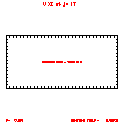 |
 |
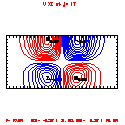 |
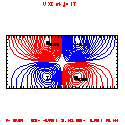 |
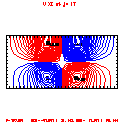 |
| U 3-D |
 |
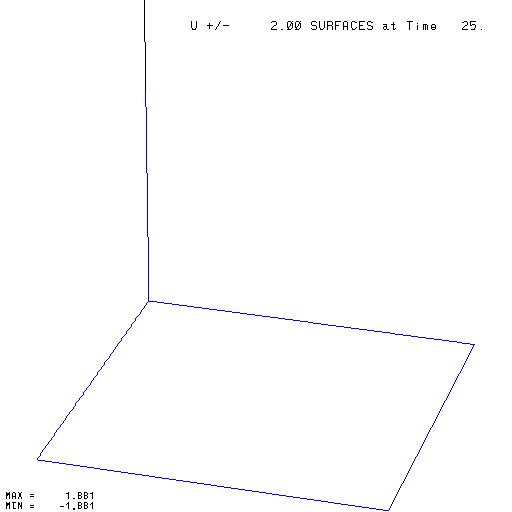 |
 |
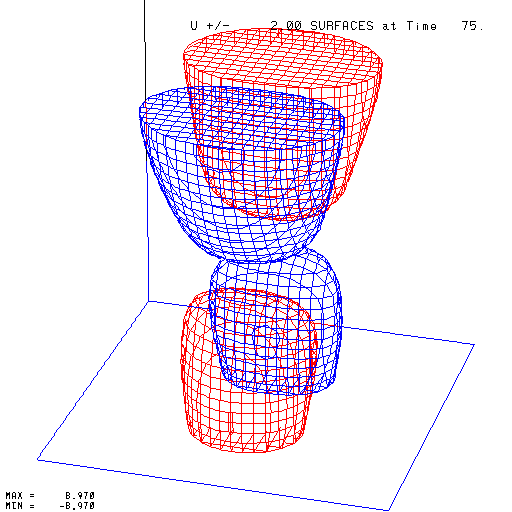 |
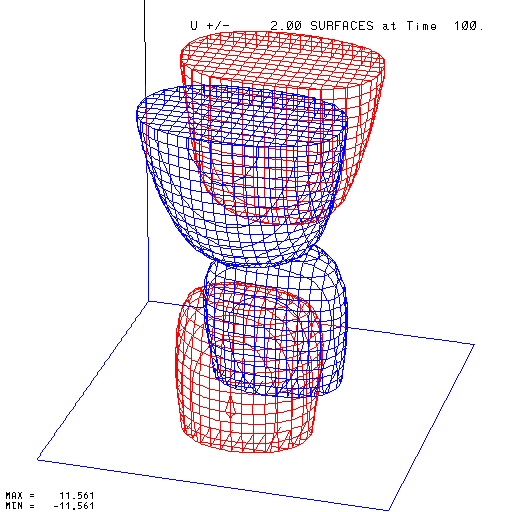 |
| V Y-Z |
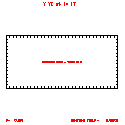 |
 |
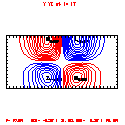 |
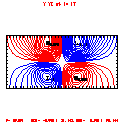 |
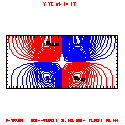 |
| V 3-D |
 |
 |
 |
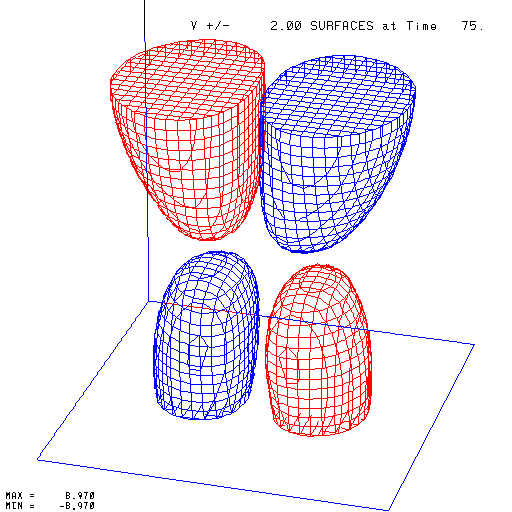 |
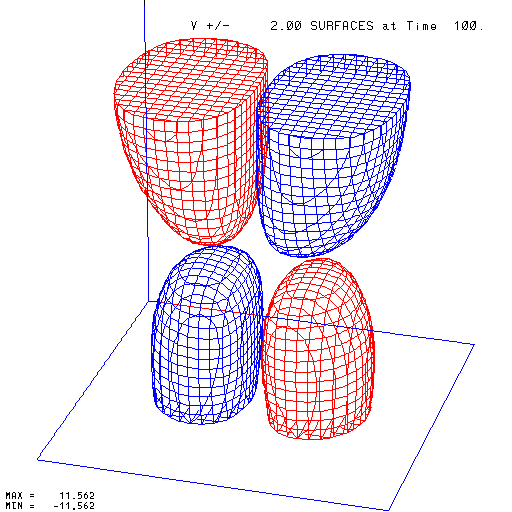 |
| W X-Z |
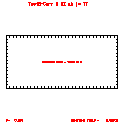 |
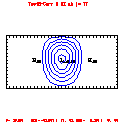 |
 |
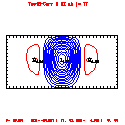 |
 |
| W Y-Z |
 |
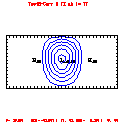 |
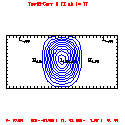 |
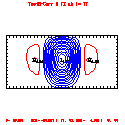 |
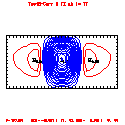 |
| W X-Y k=10 |
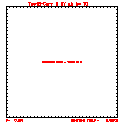 |
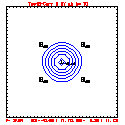 |
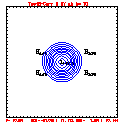 |
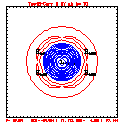 |
 |
| W 3-D |
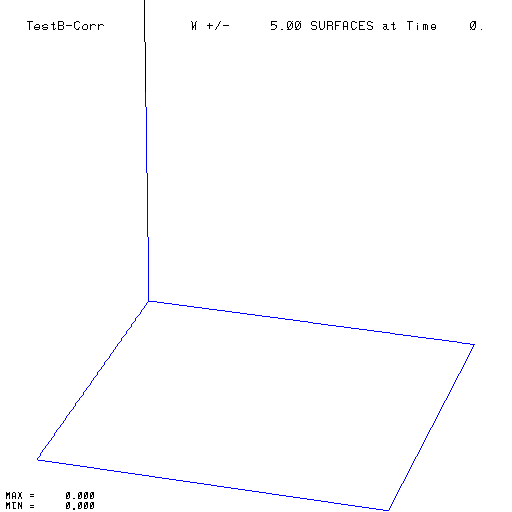 |
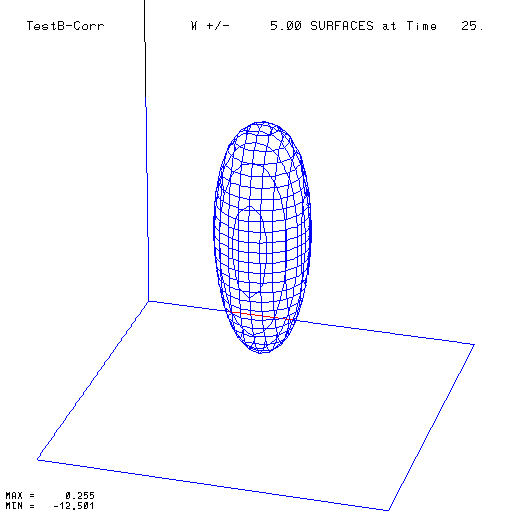 |
 |
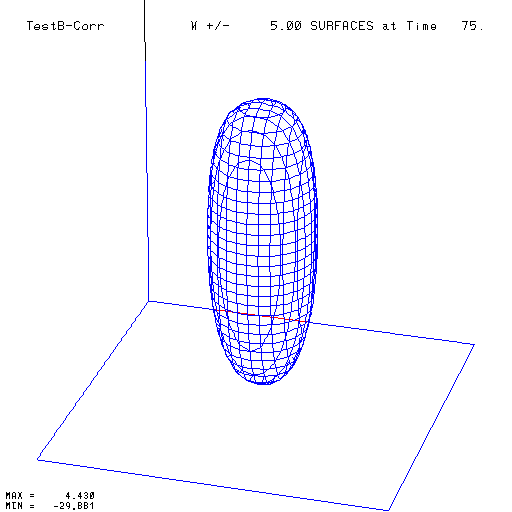 |
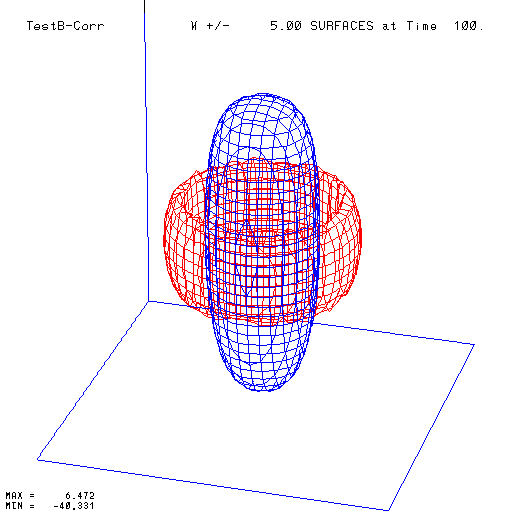 |
| P X-Z |
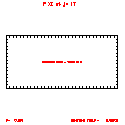 |
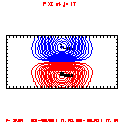 |
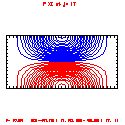 |
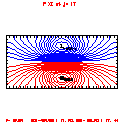 |
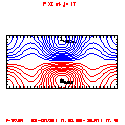 |
| P Y-Z |
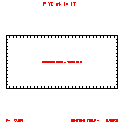 |
 |
 |
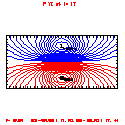 |
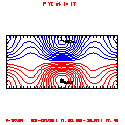 |
| P 3-D |
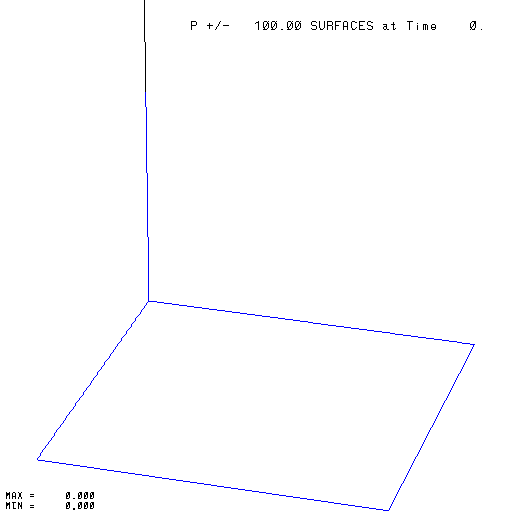 |
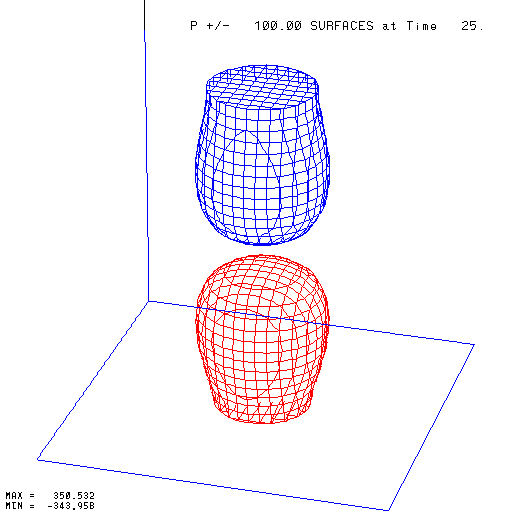 |
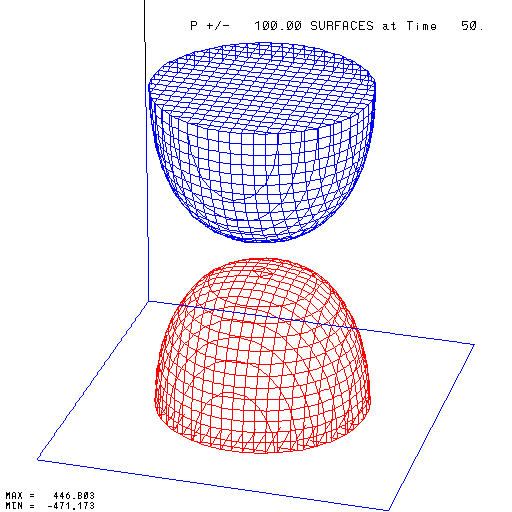 |
 |
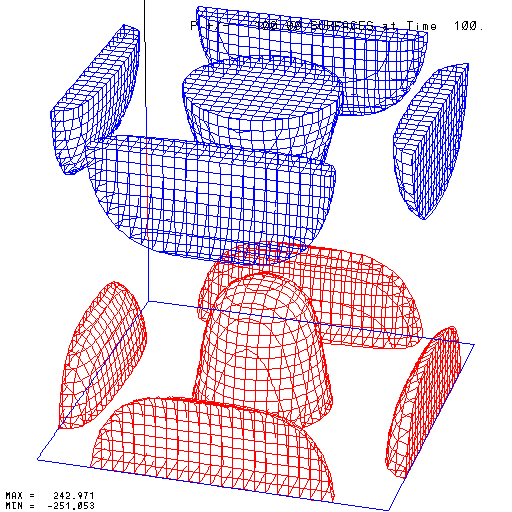 |